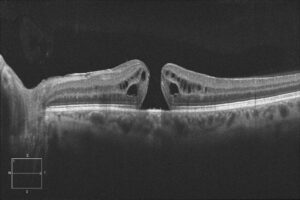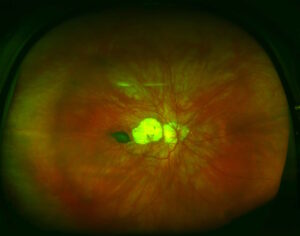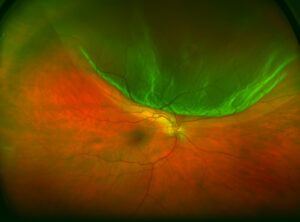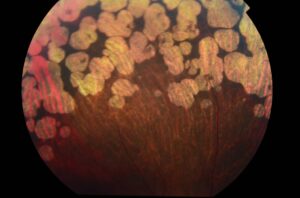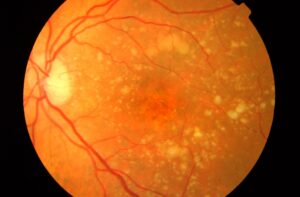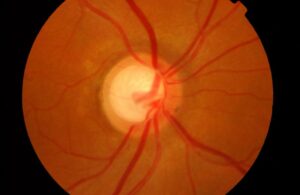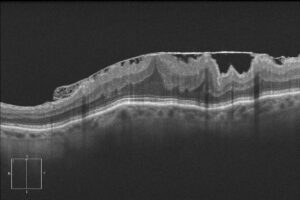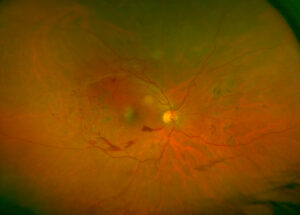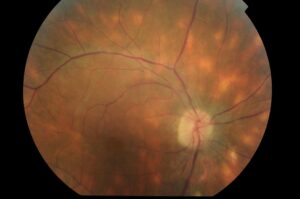Diagnostic tests
Retinography
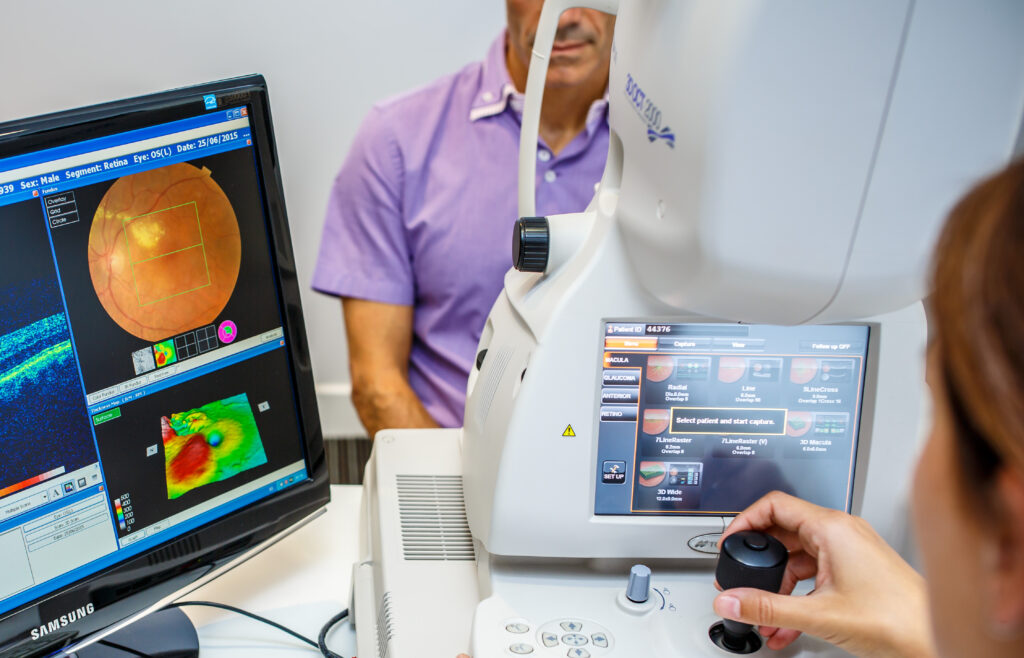
What is retinography?
Retinography is a basic test in ophthalmology consultations and forms part of the examination of the ocular fundus that we should all have regularly, particularly over the age of 40.
It involves a digital and magnified photo – produced using a microscope connected to a camera with flash – which shows us the structures inside the eyeball essential for good sight, such as the retina and the optic nerve head.
This means that we can detect alterations even at a very early stage and before visual symptoms occur. Therefore, retinography is an important preventive tool.
In addition, thanks to the wide field retinography we use during consultations at Miranza clinics, we can take panoramic images that cover more than 80% of the retina and allow even the most peripheral lesions to be detected.
What do we use retinography for?
We use retinography for the diagnosis, monitoring and check-up of the treatment of the majority of retinal diseases, as well as glaucoma (since we can also see the optic nerve head damaged by this disease).
In addition, even if you have not been diagnosed with a disorder, this test should be included in comprehensive eye tests. We recommend an annual check-up, particularly from the age presbyopia appears (40-45 years), since this is when the eye begins to degenerate and, in case of myopia, diabetes or arterial hypertension, which are all conditions affecting eye health. We also recommend comprehensive monitoring in case of a family history of ophthalmic disorders.
How do we perform retinography?
- It is a painless technique with no contact with the eye as it is ophthalmic photography.
- This test usually takes between 5 and 10 minutes per eye, depending on the type of retinography. Wide field tests are faster: a larger area of the retina can be viewed in a single image.
- It may require prior dilation of the pupil (simple or central retinography) or not (wide field retinography). In the first case, the dilating drops or mydriatic eye drops we use take 15-20 minutes to take effect and can caused blurred vision for several hours so it is a good idea to bring someone with you to the consultation.
